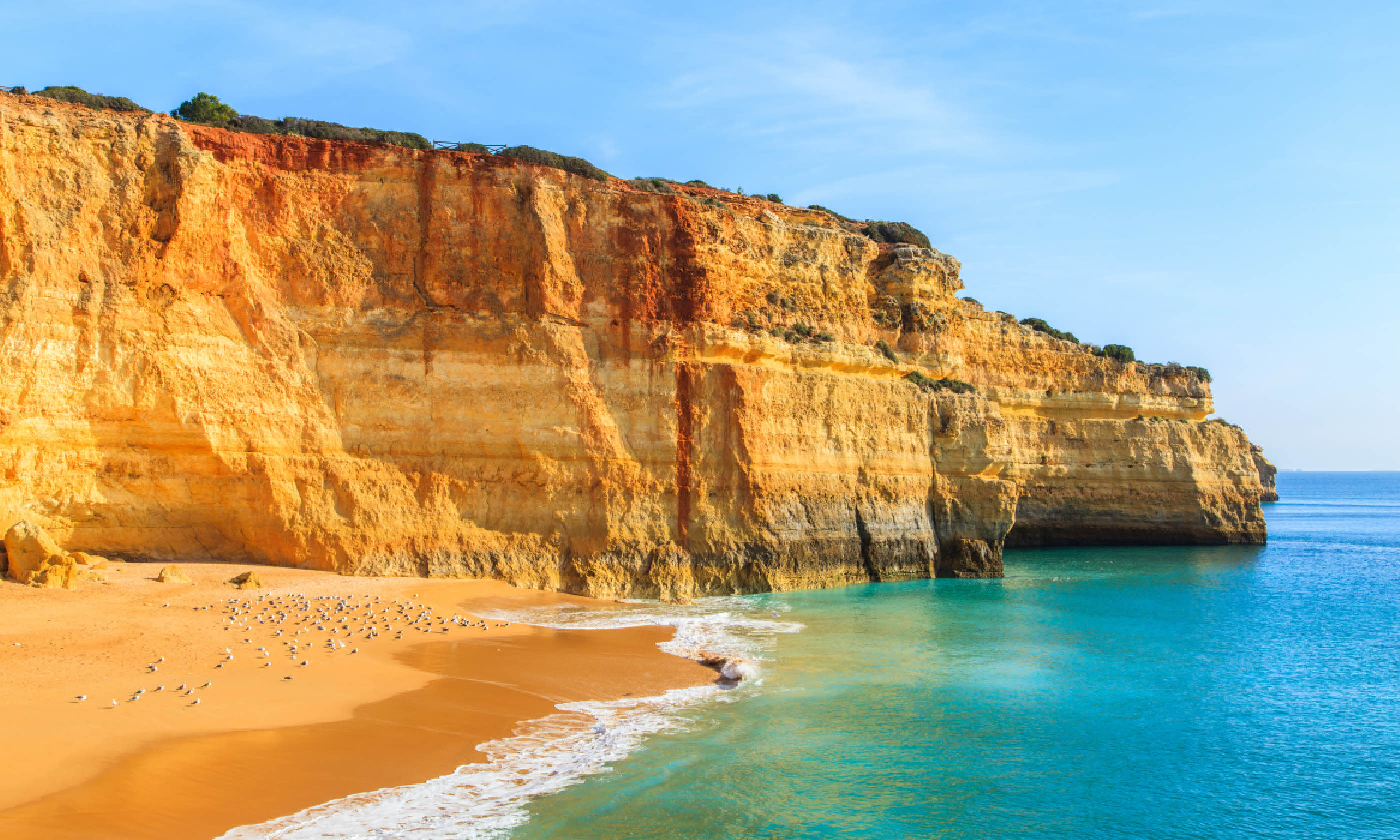
Road tripping on Portugal's west coast
Sleeping on beaches, discovering hidden caves and strolling through fairytale palaces – there are treasures aplenty on a Portugal road trip
It was the first time I had slept on a beach. Curled up in my sleeping bag, I shuffled to mould the sand around my body, then lay back to enjoy the clear August night. I was transfixed – the sky was so full of radiant stars that they seemed only millimetres apart. I dragged myself away from sleep to savour the celestial view for as long as I could, but eventually my eyes grew heavy and won the battle.
I woke just before dawn, and got up quickly to catch the sunrise. The other travellers camping on the beach were still asleep, leaving just the sound of gentle waves and subtle smell of salt in the air as my company. The sun gradually ripped its way through the sky, signalling the beginning of our second day.
I was on Praia do Barranco, a tiny beach in the southwest corner of Portugal. A friend and I had set out from Cádiz in southern Spain the day before, kicking off a one-week road trip along the coast of Portugal with our first night sleeping on the sands.
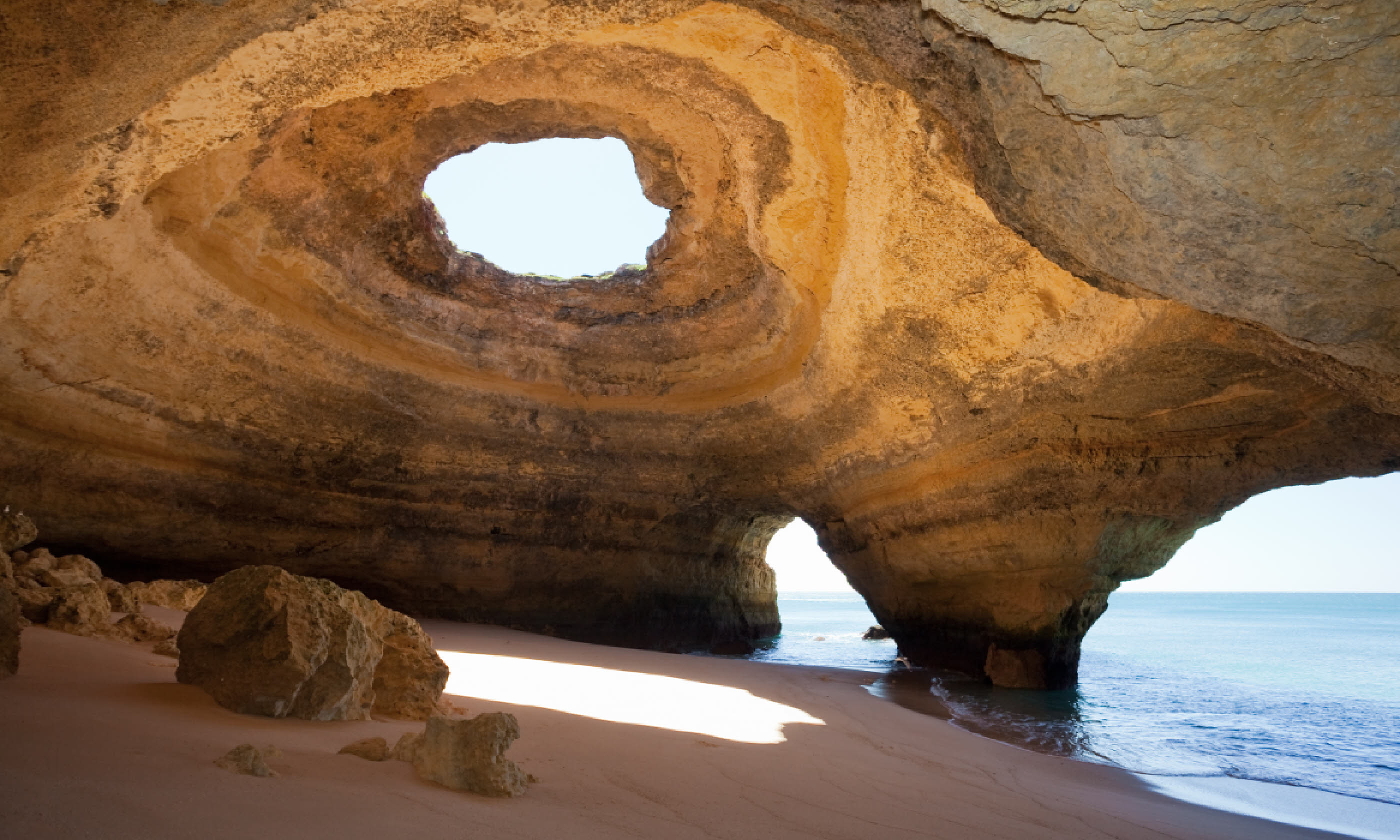 Benagil sea caves (Shutterstock)
Benagil sea caves (Shutterstock)
This beach – flanked by cliffs and so small you could walk from one end to the other in minutes – is a hidden treasure, visited throughout the year by a handful of dusty hitch hikers and nomadic folk, the kind that travel around in renovated buses. We could have happily spent a week in this secluded cove, but on that second day our attention was drawn towards another sleepy town in the Algarve: Benagil.
Tucked away on the south central coast, Benagil's beach and towering cliffs look like any other in this part of Portugal, but there are treasures to be found either side of the sands: a labyrinth of caves carved out by the ocean over hundreds of years. Arches big and small have formed along the coastline to create gateways to the mesmerising caverns hidden within the rock.
We hopped on a boat tour led by an experienced driver, a man so nifty at steering he would make a professional race car driver envious. He manoeuvred the boat through the waters, weaving in and out of the holes in the rocks and explaining the significance of the more famous caverns. We entered a large round hollow: “In winter,” he explained, “the waves can be so strong that they reach the ceiling” – the reason behind the cave's bulbous appearance.
Another cavern has a heart-shaped hole at the top, a popular spot for proposals. The largest of the caves has its own beach inside, illuminated by sunshine that pours through a hole in the ceiling. Our tour was an hour long, but I could have explored this coastline for hours more.
Our journey took us 270km north towards the Lisbon coast, a greener region of Portugal where castles and fortresses dominate the landscape. After a one-night stay in Lisbon itself, we ventured to Sintra, a town up in the hills 30km west of the capital city. A UNESCO World Heritage site, Sintra and the surrounding area is dotted with historical landmarks: manors, charming settlements, and Palácio da Pena – the most extravagant attraction of all.
Once an ancient monastery left abandoned for centuries, this palace – perched on one of the area's highest hills – was acquired by King Fernando II in the mid-19th century. Taking influence from the European castles of Germany, as well as Moorish and Gothic architecture, the king transformed Palácio da Pena into a striking masterpiece.
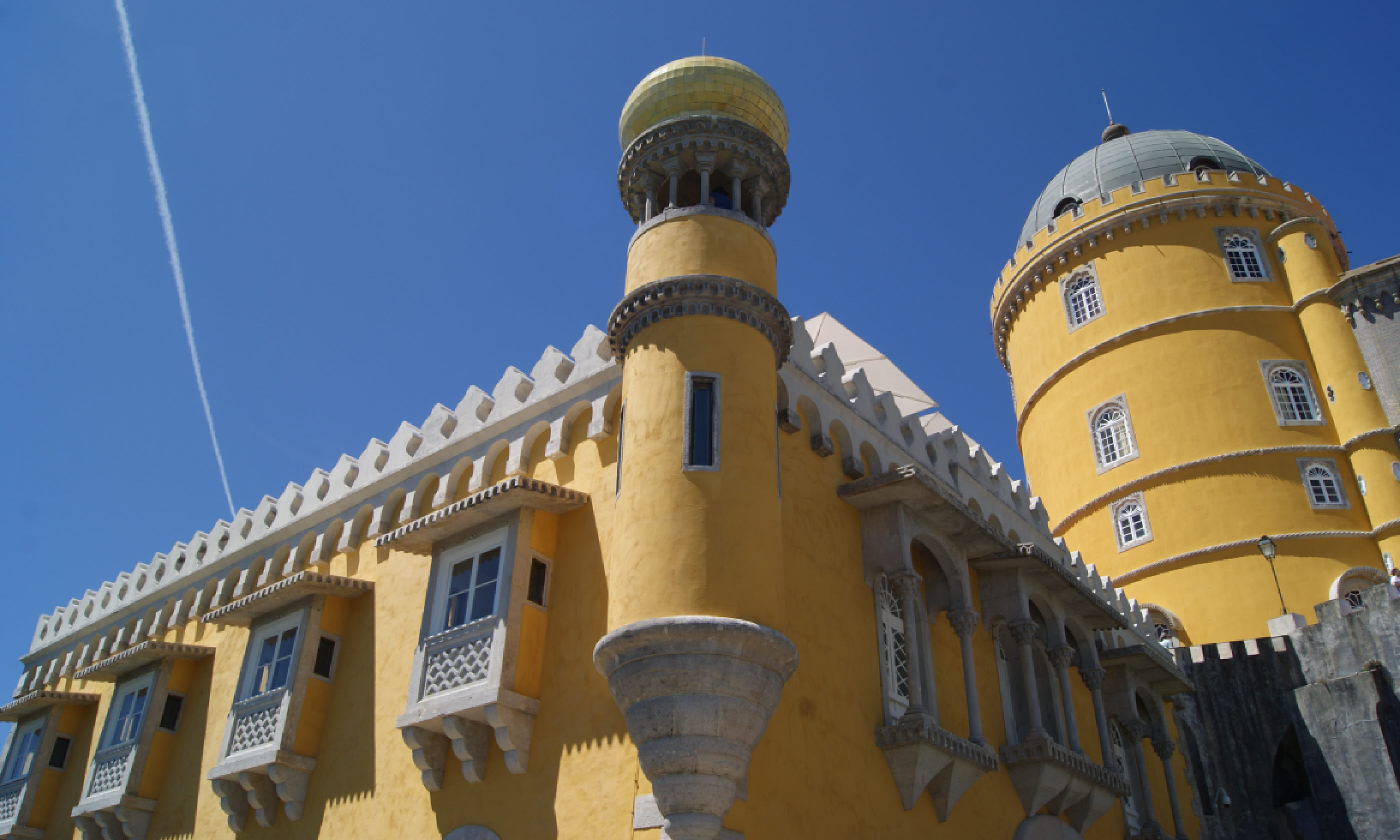 Palácio da Pena (Photo: Emma Higgins)
Palácio da Pena (Photo: Emma Higgins)
We took an afternoon exploring Sintra and the palace, getting lost among the passageways and boardwalks of Palácio da Pena. Its buildings are bright – deep red signifies the old monastery, newer parts are painted ochre, and one section is tiled a shimmering blue.
Lookout points around the palace offer views over the beautiful landscape, which is a mixture of rock and thick pine forest, with towns in the distance and the ocean beyond. Vibrant and bold, Palácio da Pena is unlike any palace I had visited before, a fascinating mix of European tradition and Middle Eastern colour, even more outstanding in the sunshine.
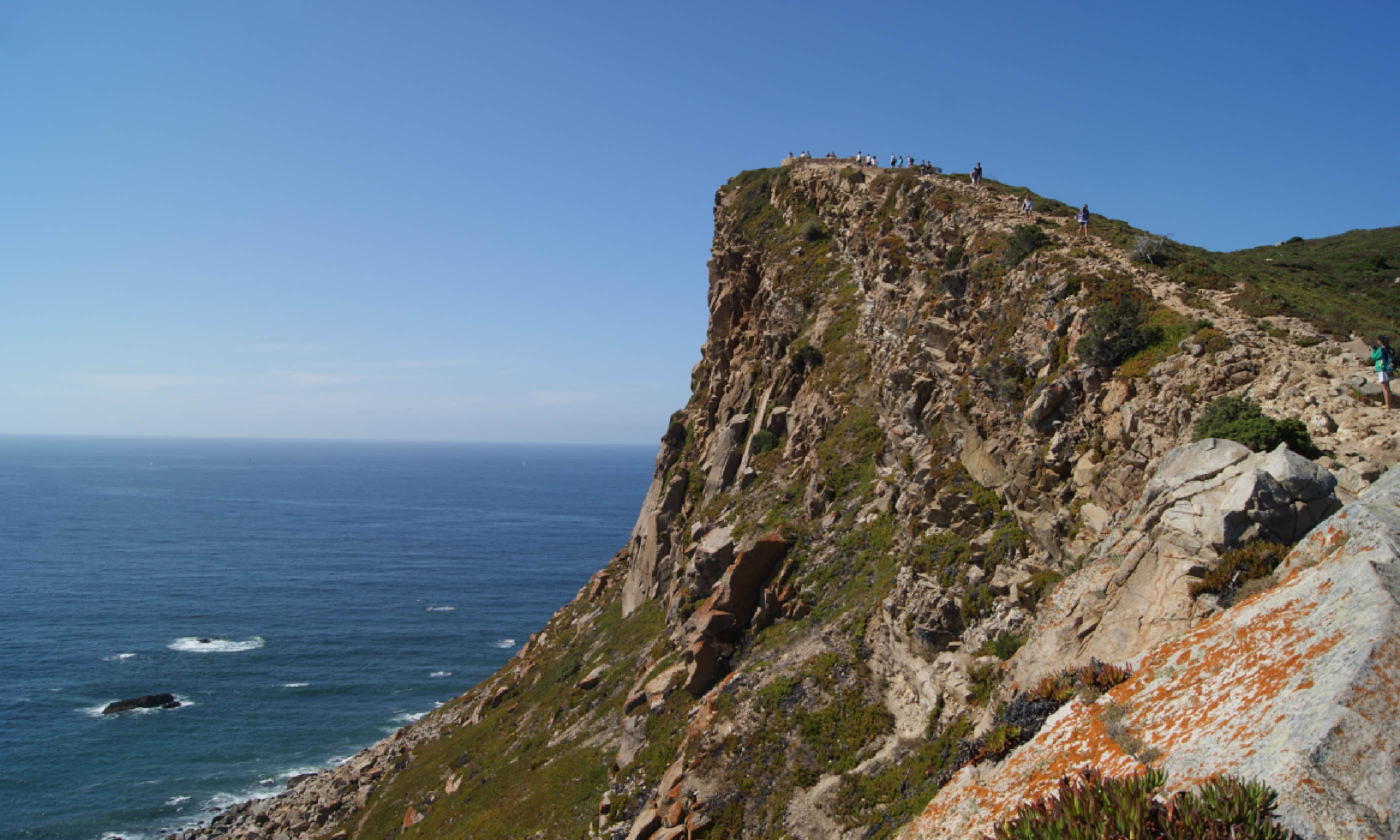 Cabo da Roca (Photo: Emma Higgins)
Cabo da Roca (Photo: Emma Higgins)
A trip to Sintra would be incomplete without visiting Cabo da Roca – the westernmost point in mainland Europe. We took the short drive west of Sintra and stood on top of the cliffs that mark the edge of the continent, looking out to the Atlantic. A fort stood here in the 16th century as this part of Portugal was an important defence point, but just a few remnants of it are still standing, alongside a lighthouse that still acts as a beacon to warn ships from the shore.
Our stopover for the night was just a half-hour drive north of Sintra, in the dusty town of Ericeira. Part fishing village, part surfer's paradise, Ericeira is far removed from Portugal's west coast tourist traps – many of its visitors are either holidaying locals or free spirits looking to catch its world-famous waves.
There is a distinct lack of commercialism in Ericeira's centre – apart from the glossy Quiksilver outlet taking pride of place. In 2011, the town's 8km-long beach was named Europe's first World Surfing Reserve, home to numerous annual surfing championships.
Our stay in Ericeira was short, but it didn't take us long to understand why so many laid-back travellers choose to spend long summers here. Even if you're not a surfer, there's something captivating about Ericeira's shoreline and the deep blue waters that crash into it. We camped at a site 300m from the beach, but could still hear the sound of the waves throughout the night – a fitting lullaby.
We powered north the next day to reach Porto in just under three hours. This city was hit badly by Portugal's economic crisis, which has led it into steady decline. One of the most distinct parts of Porto's façade is all its colourful tiled buildings, but many of these now stand in a state of disrepair because there isn't enough money to renovate them. That said, there's something about its shabby charm that pulls you in. Humble, honest, and rough around the edges, Porto is the underdog that you can't help but root for.
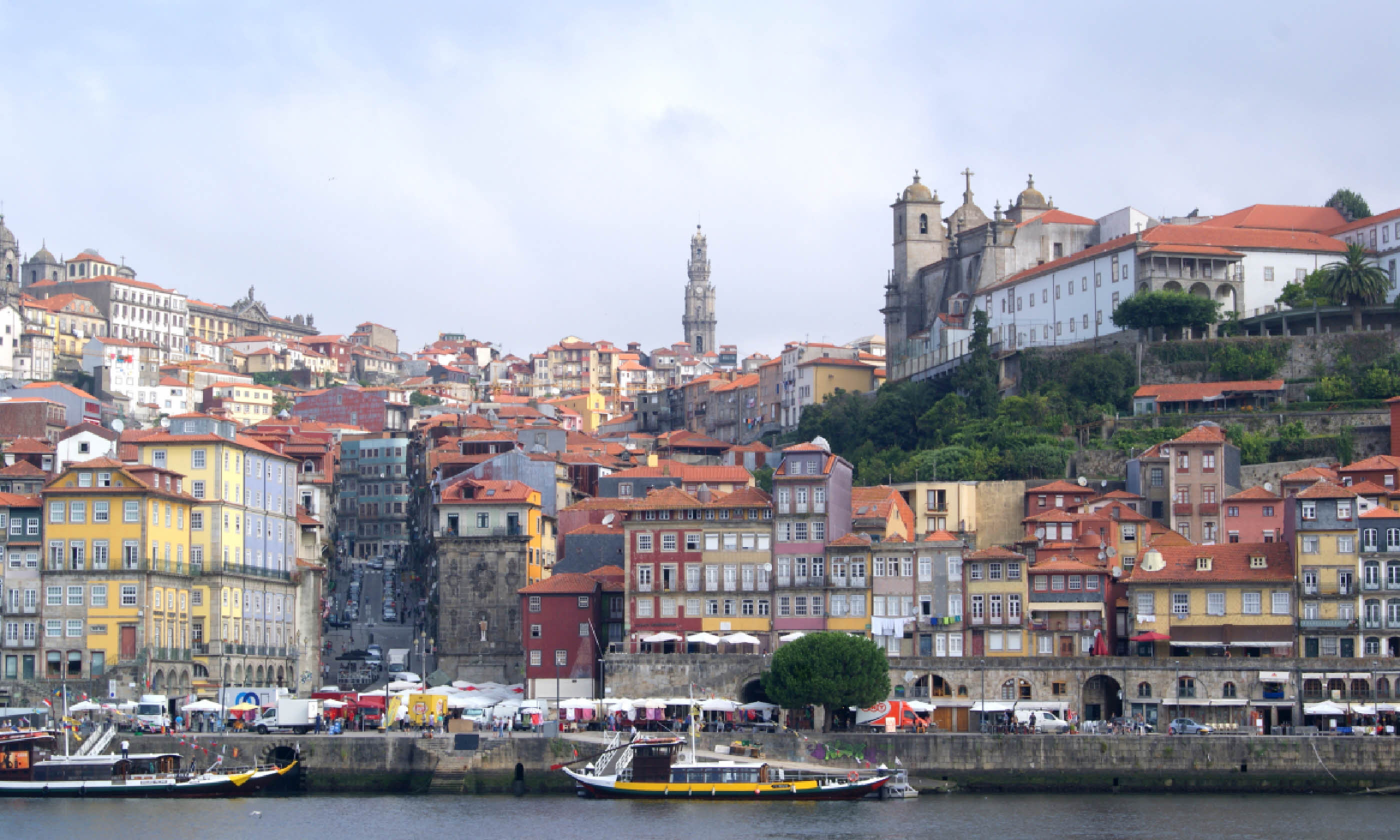 Porto (Photo: Emma Higgins)
Porto (Photo: Emma Higgins)
We spent our last evening in Portugal sampling Porto's food and wine at a restaurant named Xico Queijo on Rua Galeria Paris, a lively street recommended by our hotel. Tables from restaurants and bars spilled out onto the pavement, and the quiet hum from surrounding groups of friends and families added to the street's buzzing atmosphere. We ordered platters of meats, cheeses, and bread, washed them down with local wines and looked back at the last few days we had spent cruising along the coast.
It was hard to pull myself away from Portugal the next day. Although we had covered a lot of ground, it felt like we had only touched the surface of what the country has to offer. The nature, history, culture, food, and people had all left a firm mark on me. As we drove east and back into Spain, I vowed that this was just the start of my journey – my reconnaissance mission – into understanding Portugal, and that it wouldn't be long before I returned to learn more.




